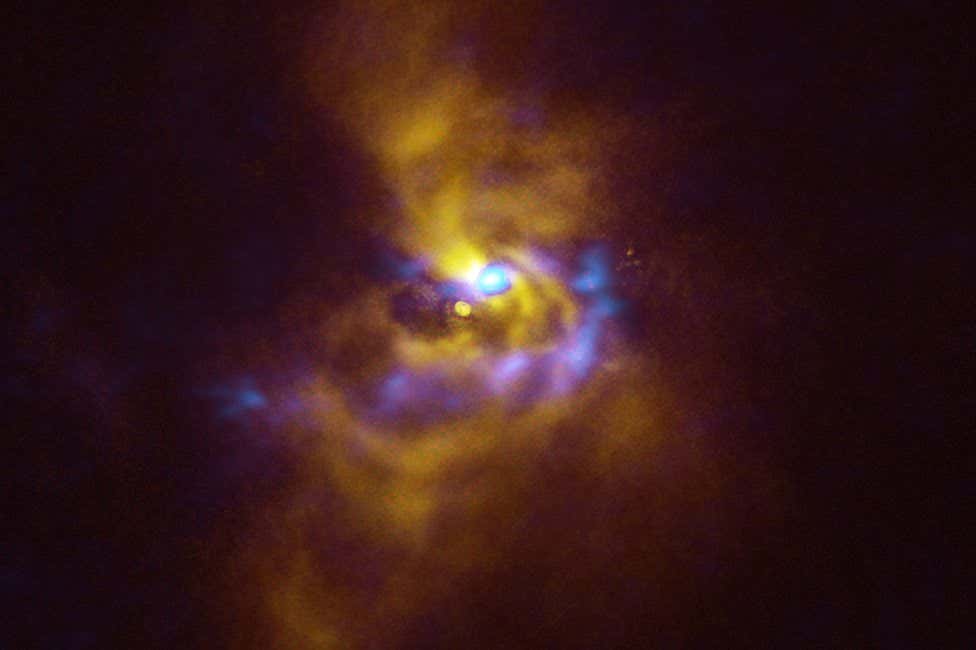Young star V960 Mon is surrounded by giant yellow spiral arms of dusty material in this image created by data from the SPHERE instrument, while the ALMA telescope reveals clumps (coloured blue) that could contract and collapse to form giant planets
ESO/ALMA (ESO/NAOJ/NRAO)/Weber et al.
In this mesmerizing photograph, a young star named V960 Mon is encircled by enormous arms of cosmic dust that could potentially collapse and give rise to gas giant planets as massive as Jupiter.
There are two primary mechanisms through which planets are believed to form: core accretion and gravitational instability. Core accretion occurs when solid matter particles around a star collide and gradually accumulate to form a planet.
On the other hand, in gravitational instability, gas and dust condense into clumps that collapse under their own gravitational pull to form the core of a planet. This process is thought to occur further away from the host star compared to core accretion, where the cooler temperatures enable the formation of gas giants.
Until now, scientists have lacked sufficient observations to determine exactly how planets form through gravitational instability.
Now, Philipp Weber from the University of Santiago, Chile, and his team have utilized the Spectro-Polarimetric High-contrast Exoplanet Research (SPHERE) instrument at the European Southern Observatory’s Very Large Telescope in Chile to capture the planet-forming process in action, as shown in the image above.
“No one had ever seen a real observation of gravitational instability happening at planetary scales – until now,” said Weber in a statement.
V960 Mon is situated approximately 5000 light years away from Earth in the Monoceros constellation, which takes its name from the Greek word for unicorn. This energetic star emits powerful jets of gas, resulting in the formation of immense spiral arms that extend further than the span of our entire solar system.
Weber and his team also analyzed previous observations of V960 Mon from the Atacama Large Millimeter/submillimeter Array (ALMA) telescope in Chile. They discovered that the spiral arms are undergoing a process called fragmentation, where gas and dust clumps are formed. This process is believed to occur prior to planet formation through gravitational instability.
Topics:








